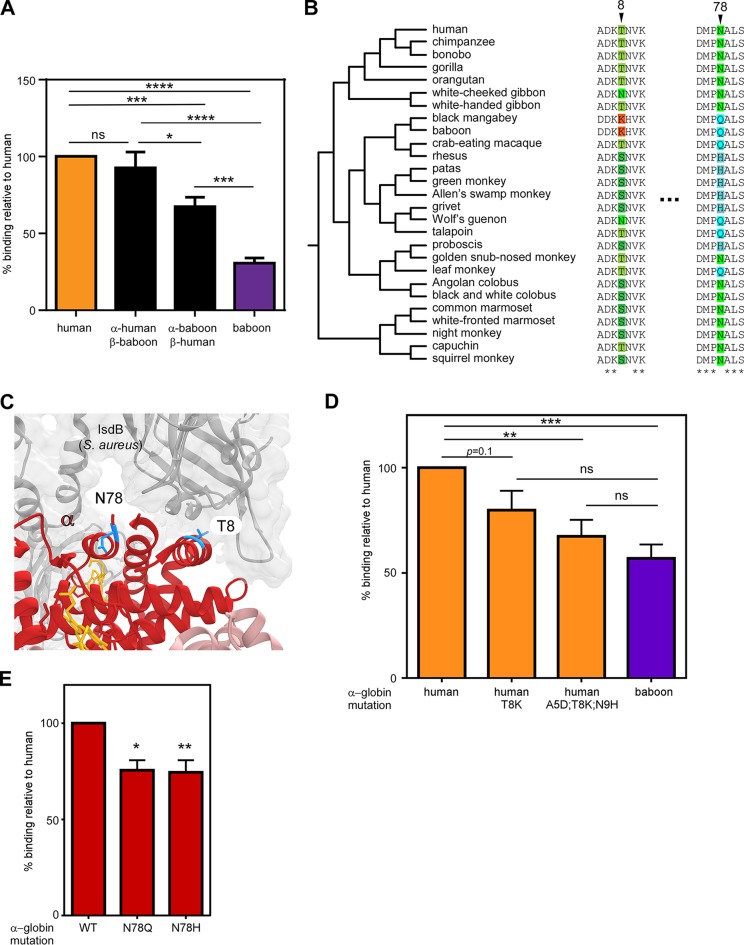FIG 3.
Species-specific diversity in α-globin restricts heme scavenging by S. aureus. (A). An iron-starved S. aureus wild type was incubated with purified recombinant hemoglobin, and bound hemoglobin was quantified. (B) Species phylogenies and sequence alignments surrounding positions exhibiting signatures of positive selection in α-globin. (C) Residues 8 and 78 of human α-globin (red) interact closely with IsdB (gray) (PDB 5VMM). (D) An iron-starved S. aureus wild type was incubated with purified recombinant hemoglobin, including mutagenized human hemoglobin, and bound hemoglobin was quantified. (E) An iron-starved S. aureus wild type was incubated with purified recombinant hemoglobin, including mutagenized human hemoglobin, and bound hemoglobin was quantified. Panel A shows the means from 3 independent experiments with 2 to 3 biological replicates, panel D shows the means from 6 independent experiments with 2 to 3 biological replicates, and panel E shows the means from 2 independent experiments with 3 biological replicates ± SEM; ns, no significance; *, P < 0.05; **, P < 0.005; ***, P < 0.0005 by two-way ANOVA with Sidak’s correction for multiple comparisons comparing transformed (percent value) data.

